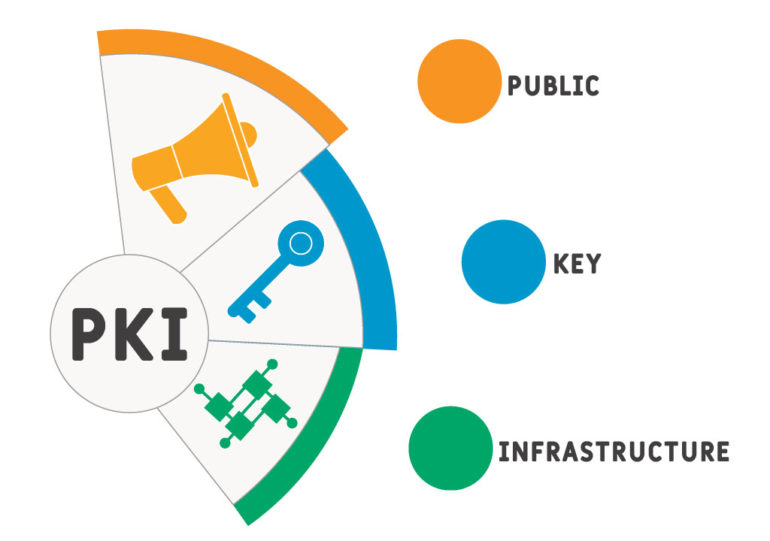This article will discuss the building blocks of PKI certificates and how they work. We will also explore some common PKI certificate issues and solutions. By understanding the basics of PKI certificates, you can make your website more secure for your users!
What is PKI Certificate?
A PKI certificate is a digital certificate that uses public-key cryptography for security. The certificate contains information about the owner, such as the name, address, and email address.
It also contains a public key and a private key. The private key is used to sign or encrypt data, while the public key is used to verify the signature or decrypt the data. PKI certificates are used to secure communications between two parties, including a website and a user.
PKI Certificate Basics
Before we delve into the nitty-gritty of PKI certificates, let’s review some basics. PKI stands for Public Key Infrastructure. It is a system of digital certificates, public keys, and private keys that is used to secure communications. PKI certificates are issued by a Certificate Authority (CA). A CA is an organization that administers and manages PKI certificates.
There are two types of PKI certificates, Self-Signed Certificate and Certificate Signing Request (CSR).
A self-signed certificate is a PKI certificate signed by the owner of the certificate. Self-signed certificates are not as secure as PKI certificates signed by a CA.
A Certificate Signing Request (CSR) is a PKI certificate signed by a CA. A CSR is more secure than a self-signed certificate because a third party has verified it.
How Do PKI Certificates Work?
PKI certificates use a process called public-key cryptography, which encrypts data with two keys: a public key and a private key.
The public key is available to anyone, while the owner keeps the private key secret. PKI certificates use the public key to encrypt data and the private key to decrypt it.
The encrypted data with the public key can only be decrypted with the corresponding private key. This process is called asymmetric encryption, which makes PKI certificates so secure.
If an attacker intercepts a PKI certificate, they would not be able to decrypt the data without the private key.
PKI certificates are used to secure communications between two parties. For example, when you visit a website, your browser will use the website’s PKI certificate to encrypt the data sent between your computer and the server.
This process protects your data from being intercepted by an attacker. PKI certificates are also used to sign data. Signing data is a way of verifying the authenticity of the data.
When data is signed with a PKI certificate, anyone can verify that the data came from the owner of the PKI certificate. This process is called digital signatures, and it is what ensures that the data has not been tampered with.
PKI certificates are an essential part of online security, and they are used in many different applications. The following section will discuss some common PKI certificate issues and solutions.
PKI Certificate Issues and Solutions
One common PKI certificate issue is expiring certificates. Every PKI certificate has an expiration date, and it is essential to renew your PKI certificate before it expires.
If a PKI certificate expires, the encrypted data with the certificate can no longer be decrypted. This can cause problems for website owners and users.
Another common PKI certificate issue is revoked certificates. The CA can revoke a PKI certificate if it is no longer valid.
For example, a PKI certificate may be revoked if the owner’s information changes or the private key is compromised. If a PKI certificate is revoked, the encrypted data with the certificate can no longer be decrypted.
A third common PKI certificate issue is misused certificates. A misissued PKI certificate was issued to the wrong person or for the wrong purpose.
For example, a PKI certificate may be misused if the CA makes a mistake when issuing the certificate. If a PKI certificate is misused, the data encrypted with the certificate can be decrypted by someone other than the intended recipient.
Many PKI certificate issues can cause problems for website owners and users. However, there are also solutions to these problems.
The most common solution to PKI certificate issues is to use a Certificate Authority (CA). A CA is an organization that issues and manages PKI certificates.
Using a CA is the most secure way to ensure that your PKI certificates are valid and up-to-date. In addition, using a CA will give you access to support if you have any PKI certificate issues.
If you are a website owner or user, it is essential to be aware of PKI certificates and the potential problems that they can cause. By understanding PKI certificates and using a CA, you can ensure that your data is secure and that your communications are private.
Final Thoughts
In conclusion, a PKI Certificate is an integral part of online security. It works by creating a secure connection between the user’s computer and the website they are visiting. This helps protect the user’s information from being intercepted or stolen by hackers. While some potential issues with PKI Certificates, such as browser compatibility, can generally be resolved relatively quickly. Overall, using a PKI certificate is one of the best ways to ensure that your data remains safe and secure when you are browsing the internet.

